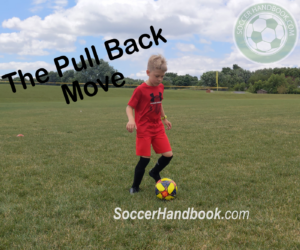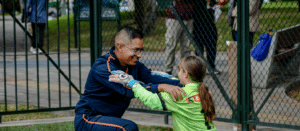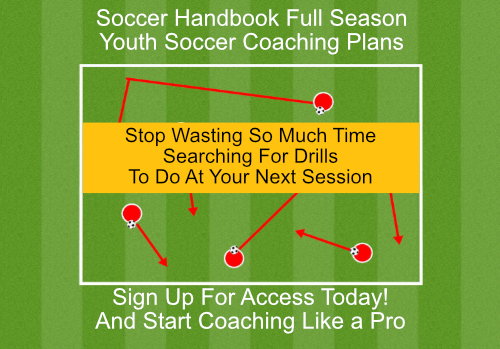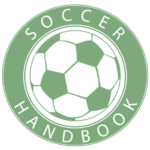Find The Right Soccer Ball Size By Age:
Soccer balls (or footballs in most places around the world) come in many colors, materials, and sizes. If you’re new to soccer or you have kids that play soccer, you might be confused as to which size is the best size soccer ball for what age. You may be asking: “What size soccer ball do I need?“, “What is the best soccer ball size by age?” or “What size soccer ball does my kid need?“
Using the right soccer ball is important for each type of play; are you playing pickup, practice, or is it an official match? It is also vital for a player’s development and using the wrong size ball can be pretty frustrating and actually dangerous, especially if you’re just learning how to play.
As the governing body of international football (soccer), Fifa, the Fédération Internationale de Football Association, creates the standards for soccer ball sizes.
Soccer Ball Sizes the Breakdown – Soccer Ball Size by Age
Alright, let’s break it down. There are essentially 5 sizes:
- Soccer Ball Size 5 used for adults and professionals
- Soccer Ball Size 4 for ages 8-12 years old
- Soccer Ball Size 3 for kids 5-8 years old
- Soccer Ball Size 2 for ages years 3-5
- Soccer Ball Size 1 for 3 years and under
Check out our Soccer Ball Buying Guide to find our favorite balls.
What Size Soccer Ball is Right For Me?
And why do we need so many sizes?
One of the more obvious reasons for soccer ball sizing standards is the safety of younger players. Kids are smaller, so the balls should be smaller, so if a 4-year-old is hit by a size 5 ball, it will hurt a lot more than if it was a size 3 ball.
The size is also essential for learning how to control the ball. Little kids have small feet, so if the ball is too big, they will have trouble manipulating it. A size 5 soccer ball will be heavier than a size 4 or size 3, which could actually cause injuries to muscles and tendons if a child tries kicking a ball that is too large for their age. When my son was 3 he always wanted to play with a size 5, but he could barely move it because it was too heavy.
Are you a parent or a volunteer coach? Are you tired of spending so much time searching for drills and looking for help with practices? Then check out our U6-U8 Soccer Coaching Handbook. It includes a full season of training sessions, all in one place!
The Five Soccer Ball Sizes in Detailed Chart
| Soccer Ball | Size: | Weight: | Ages: |
| Size 1 | 18 – 20 inches | 195 – 205 grams | 3 and under |
| Size 2 | 20 – 22 inches | 250 – 280 grams | 3 – 5 years old |
| Size 3 | 23 – 24 inches | 300 – 320 grams | 5 – 8 years old |
| Size 4 | 25 – 26 inches | 350 – 390 grams | 8 – 12 years old |
| Size 5 | 27 – 28 inches | 410 – 450 grams | 12+ years old |
If you’re looking for futsal balls, check out our article: Best Futsal Balls
Size 1
Ages: 3 and under
Size: 18 – 20 inches (circumference)
This is the smallest soccer ball size. If you’re anxious to get your child kicking a ball as soon as they walk this is the ball to use. It is excellent for children aged 3 and under that like to simply kick a ball around.
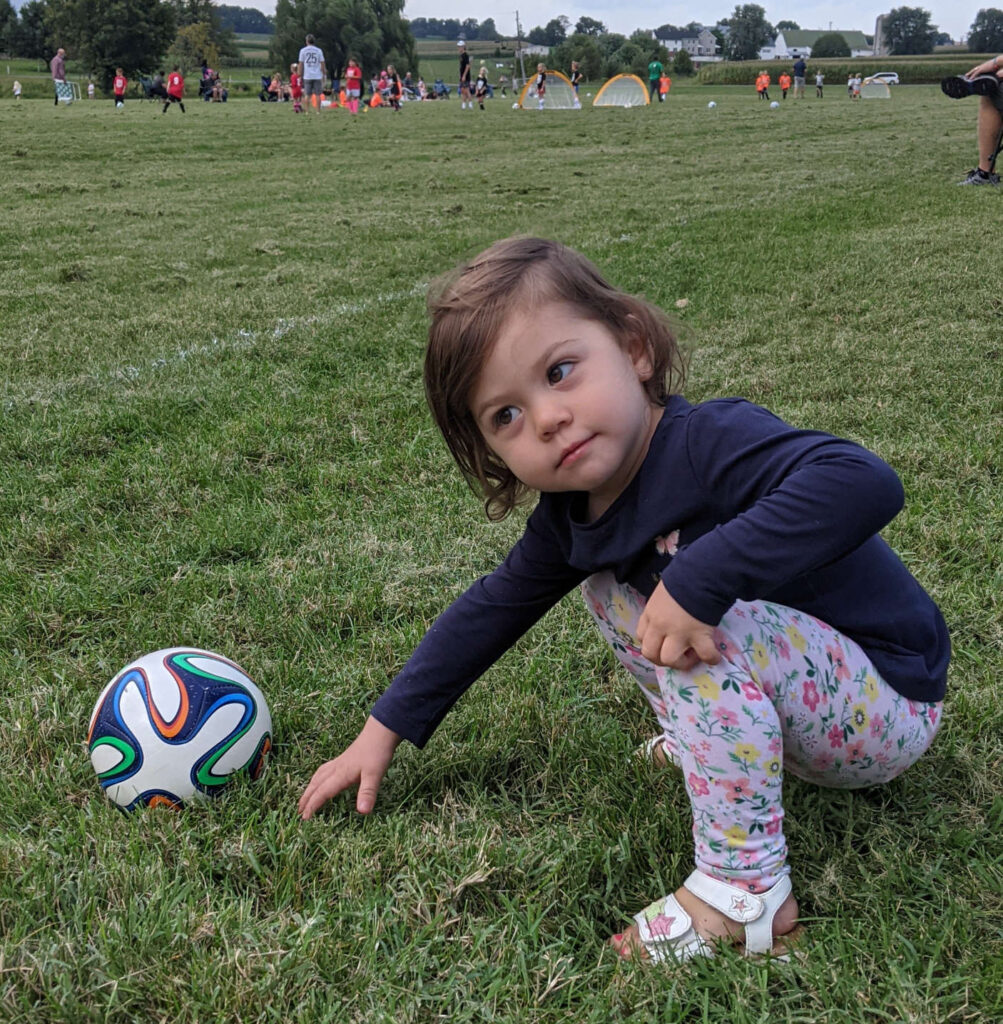
For older kids, this is a great soccer ball for kicking around in the house. Since it is smaller in size and weight, you won’t break as much, but you didn’t hear it from me…
Some people also like to use this for technical training. Since they are only 18-20 inches in circumference, they can be a great way to improve your touch and control.
Size 1 soccer balls are also favorites for teams to give away as souvenirs with player or club logos. I one from Google and the Philadelphia Union.
Size 2
Ages: 3 – 5 years old
Size: 20 – 22 inches (circumference)
Weight: 250-280 grams
The size 2 soccer ball is the least standard size. Many youth soccer programs default to the size 3 as their smallest ball even though the soccer ball standard recommends this size ball for 3 – 5 years players. Meaning this is what is recommended for toddlers and preschoolers
But there is also a market for older players to use a size 2 to practice skills, control, juggling, and tricks.
Again clubs often use this size for their promotional balls.
Size 3
Ages: 5 – 8 years old
Size: 23 – 24 inches (circumference)
Weight: 300 – 320 grams
The size 3 soccer ball is often where many of the youth soccer teams start. This is also the first youth soccer ball size that is used for real games and matches since many club and rec leagues start to play games at U6.
This size ranges from 23” – 24” in circumference and weighs about 300-320 grams. It is a little larger and heavier than the size 2 and is ideal for ages 5 – 8 years old. Because it is small and lighter than a 4 or 5 size ball it encourages proper handling and control for younger players. This will help young players gain confidence and develop their skill base as they are introduced to the beautiful game. This is what my son started with when he was U6. You can see his review at the link below.
Need help choosing the size 3 ball? Check out our buyer’s guide: Best Size 3 Soccer Ball for Kids Age 5-8
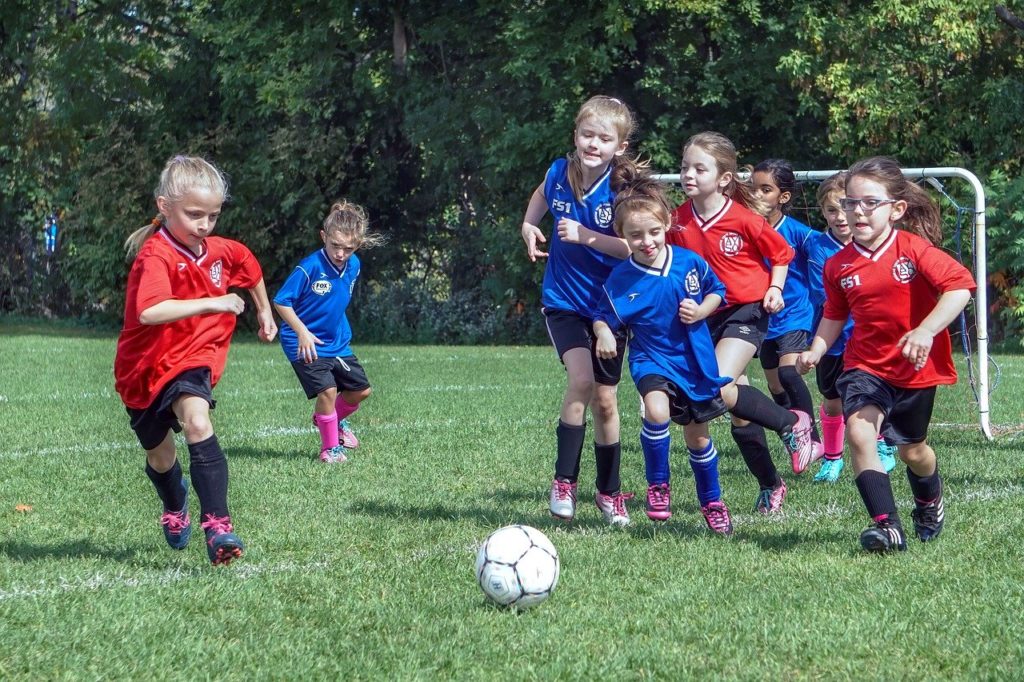
Size 4
Ages: 8 – 12 years old
Size: 25 – 26 inches (circumference)
Weight: 350 – 390 grams
A size 4 soccer ball is designed for youth players aged from 8-12 years old. Since it is slightly smaller and lighter weight (250-390 grams) than the size 5 ball, youth players will find it easier to control and move during practices and matches.
8-12 is the age when many youth players are making the transition from being introduced to soccer and starting to develop skills. This transitional size ball is perfect for this stage in their development.
Size 5
Ages: 12+ years old
Size: 27 – 28 inches (circumference)
Weight: 410 – 450 grams
The size 5 is the ball that is the most commonly used soccer ball and is best suited for older players, ages 12 and older, including adults. Even the professionals use size 5 balls.
The size 5 weighs in at 410-450 grams. Since it is heavier than the other sizes, it is not recommended for young children. It will be difficult for them to control, kick, and pass and could be a safety hazard because their muscles and tendons may not be ready for the weight of the ball.
For official matches make sure to use size 5 balls that have the “FIFA Approved” or “FIFA Inspected” stamp. This means they have been tested to be the official size and weight.
Conclusion
Finding the right size soccer ball can be confusing, and if you get it wrong it could lead to frustration. Especially for new players and parents.
Getting it right will help you or your youth player have more fun learning the beautiful game.
Hopefully, this article and the Soccer Handbook site, in general, have helped you select the right equipment. Also, check out our guide for buying portable soccer goals. And don’t forget your pump!
Feel free to ask us any questions you might have, but also be sure to ask your league and coaches what they recommend.



